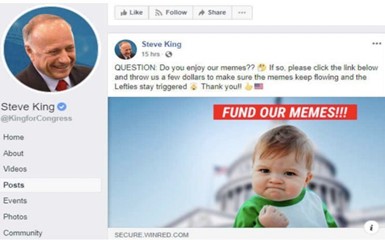Affirming the application of the fair use defense to copyright infringement, the US Court of Appeals for the Fifth Circuit determined that a district court’s sua sponte invocation of a fair use defense to parallel trademark claims was harmless error. The Court also affirmed that the district court did not abuse its discretion in awarding attorneys’ fees based on the prevailing party standard for copyright claims. Keck v. Mix Creative Learning Ctr., L.L.C., Case No. 23-20188 (5th Cir. Sept. 18, 2024) (Jones, Smith, Ho, JJ.)
Michel Keck, a multimedia artist, sued Mix Creative Learning Center, a Texas-based art studio, for copyright and trademark infringement after Mix Creative sold art kits featuring Keck’s dog-themed artwork and a brief biography, intended for at-home learning during the pandemic. Keck had registered her Dog Art series (in the form of decorative works) with the US Copyright Office and her name as a trademark with the US Patent & Trademark Office. Keck claimed that Mix Creative’s art kits violated her rights. After receiving notice of the lawsuit, Mix Creative promptly ceased selling its kits.
Following discovery, both parties filed cross-motions for summary judgment. The district court granted summary judgment in favor of Mix Creative on Keck’s copyright claim, finding fair use, and also granted summary judgment on the trademark claim sua sponte, as both parties had agreed that the fair use defense applied to both claims. The district court further awarded Mix Creative more than $100,000 in attorneys’ fees and costs, although it declined to hold Keck’s attorneys jointly and severally liable.
Keck appealed, challenging the copyright fair use finding and the district court’s sua sponte application of the fair use defense to the trademark claim. Mix Creative challenged the district court’s refusal to hold Keck’s attorneys jointly and severally liable for fees.
The Fifth Circuit affirmed the district court’s application of the fair use defense to Keck’s copyright claims. The Court focused on the first and fourth factors of the fair use defense (respectively, the purpose and character of the use and the effect of the use on the potential market for or value of the original work), noting that the courts typically give these two factors special attention.
On the first factor, the Fifth Circuit found Mix Creative’s use to be transformative. Although Mix Creative is a commercial enterprise, the art kits served an educational purpose, distinct from the decorative purpose of Keck’s original works. As a result, the likelihood of Mix Creative’s kits serving as a substitute for Keck’s original works in the market was low.
The fourth factor also favored Mix Creative, as the Fifth Circuit found no evidence that Mix Creative’s kits would harm the market value of Keck’s original decorative works. In fact, the Court suggested that the kits might enhance Keck’s reputation and sales by providing her with free advertising. Furthermore, Mix Creative operated in a different market (educational rather than decorative), and Keck had not demonstrated any history of selling derivative works for children’s art lessons. The [...]
Continue Reading
read more

 Subscribe
Subscribe




